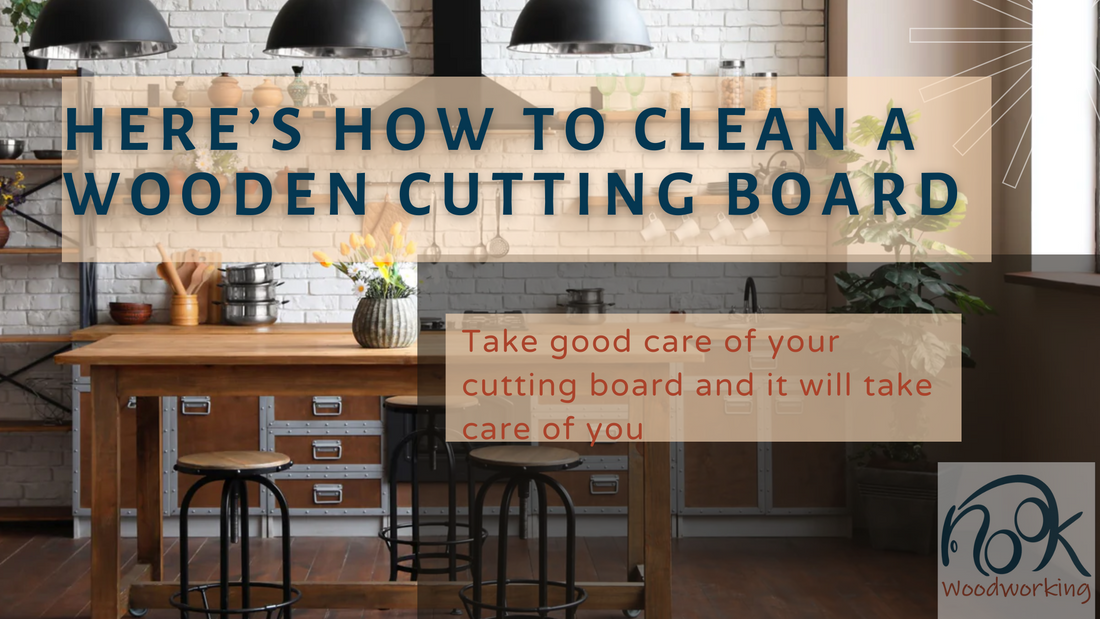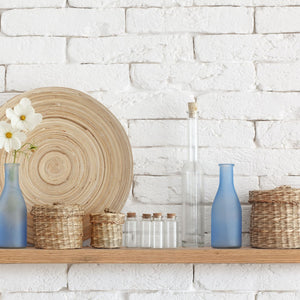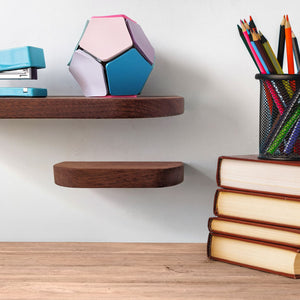Wondering how to clean a wooden cutting board? We've got you covered. After slaving away in a hot kitchen all day the last thing you want to do is painstakingly clean your wooden cutting board. But believe us, cleaning your wood cutting board is actually quite simple and can help prolong your cutting boards lifespan for years to come.
Let's discuss why you shouldn't just throw your cutting board in the dishwasher, how to properly clean it, and more.
Wait, there's a wrong way to clean wooden boards?

Yep! Just like your beloved cast iron skillet a wooden cutting board requires a little extra tender loving care. And this has everything to do with its material. See, wood is a porous substance. Unlike plastic, which allows water to simply roll right off, wood will absorb liquids.
And, as you might know, a wet environment is like a warm, cozy, bed to all sorts of bacteria. If you don't clean a wooden board right, it can suck in water and bits of food, which makes bacteria multiply like crazy. Over time, the board can become a bacteria party spot, and that's bad news for your next meal and your stomach!
Why can't I put my cutting board in the dishwasher?
If your cutting board is plastic, then go wild. Plastic cutting boards can handle the hot, humid conditions inside a dishwasher without any issues. Wood cutting boards, on the other hand, are a different story.
When you put a wooden board in the dishwasher, the heat and moisture make the wood swell and warp. It can even crack as it absorbs water. Over time, this damages the board. And makes it uneven and more difficult to use.
And yes, some types of wood are more resistant to water and humidity. Bamboo, we're looking at you. But for your average oak or mahogany board, you'll want to avoid the dishwasher altogether. Otherwise, you'll need to invest in some sturdy wood glue.
What is cutting board oil and why do I need it?
While cleaning your cutting board is pretty simple, you will need to get some high-quality food grade mineral oil before you begin. At NookWoodworking, we're fans of Thirteen Chefs Mineral Oil which is available at Amazon and is pretty affordable. Cutting board oil soaks into the surface of your cutting board and coats all its natural wood fibers. Because of this, other liquids are unable to saturate the board. So that bloody steak you're excited to cut into? It won't leave a stain (or bacteria) on your cutting board. And that's a good thing!
Another pro of coating the surface of your board in oil is that it's hydrating. Because with wooden cutting boards, not only do you have to worry about them being too moist-you also have to prevent them from drying out. And don't worry about tasting the oil. Food grade means that it's perfectly safe to consume. Though, by the time you use your board again, the oil will be fully absorbed into the wood.
OK, so how do I clean my wood cutting board?

When you need a clean cutting board you have a few options! All three of these options are safe, effective, and won't leave behind any harmful residue.
Option 1: Vinegar and baking soda
Alright, let's tackle cleaning your wooden cutting board with a dynamic duo: vinegar and baking soda! First, sprinkle a generous amount of baking soda all over the board. Next, grab a bottle of distilled white vinegar and pour it over the baking soda.
Watch it fizzle! This combo breaks down grime and neutralizes odors.
Scrub with a sponge in small circles to make sure you reach every corner. Rinse the board with warm water, then pat it dry with a towel. Stand it up to air-dry completely. Congrats, your cutting board is now super clean and ready for your next kitchen adventure!
Option 2: Soap and warm water
When your cutting board gets messy after slicing meat or working with dairy, it's warm and soapy water to the rescue! They're perfect for kicking out those nasty harmful bacteria. Here's the game plan: Soak your sponge in warm, almost hot water, then add a few drops of dish soap. Time to scrub! You've got to hit every square inch—top, bottom, and don't you skip those edges. Work that sponge into every nook and cranny. Those little germs can't stand up to a good scrubbing.
Once you've given it the ol' elbow grease, rinse the board under warm water to send all that soap and any lingering bacteria down the drain. Shake off excess water and pat the board dry with a clean cloth to wrap up the job. Then stand the board up to air-dry completely, saying goodbye to any last unwanted germs. That's it! You're all set for your next food prep session.
Option 3: Lemon juice and coarse salt
If you're eyeing a natural, smell-good option to clean your cutting board, lemon juice and coarse salt are your best buddies!
Here’s how you do it: Sprinkle a generous amount of coarse salt over the board. Cut a lemon in half and use one part to scrub the salt into the board. The salt acts like a gentle scrubber. And the lemon juice is a natural disinfectant and deodorizer, leaving behind a fresh, clean scent.
Work over the entire surface, squeezing the lemon slightly as you go to release the juice. Let this tangy, salty mixture sit for a few minutes to work its magic. Then, scrape off the dirty mixture (a bench scraper or the flat side of a knife works great). Give the board a final rinse with water and pat it dry with a cloth or paper towel.
At NookWoodworking we know wood
See, cleaning you wooden cutting board isn't that difficult. In fact it can be quite fun. If you're looking for other tips and tricks about how to care for wood surfaces in your house be sure to follow us on our blog. And if you need sturdy and fabulous oak or mahogany wood shelves you can't go wrong with our custom floating and bracketed styles.






